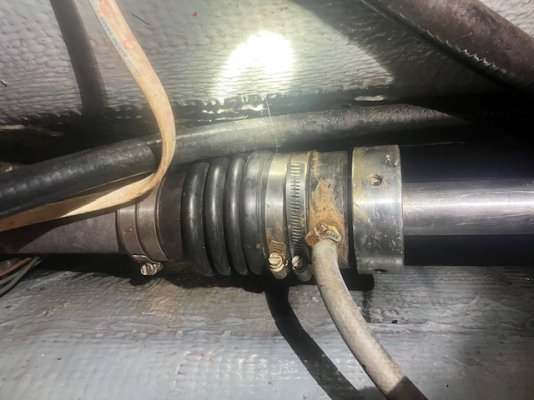I agree the feed hose cannot be loading the bellows in any way. I don't think you need to burp the seal on one that has raw water feed like that one. It should flood the instant you start the engine (or you have other problems). Burping is required on the low speed version with no raw water feed. Either will stick and should be freed by hand before operating. It can stick in as little as a week or two of sitting idle.
I don't think PSS has explicitly recommended burping for low-speed vessels since they began instructing the use of a vent line for these vessels. And, as you observe, it is even less necessary in higher speed vessels, generally 12+ knots according to their docs, or those otherwise directly supplying cooling/lubricating water via the barb to the interface.
Having said that, I am very hesitant to ever recommend anything other than burping the joint. For example, I can't tell from the picture if that line is connected to a cooler or some other source of sea water supply. Or, if it is, like mine, a passive vent line. Maybe there was some text I am forgetting.
In any case, any tube can become clogged, especially those that occasionally get dirty salt water pushed into them, as happens when the boat is splashed (the splashing does push some water around). I don't trust anything rarely used or tested. I don't mind the vent line as an insurance policy, but I don't want it as my primary plan. Just belt and suspenders.
Additionally, not all vented set ups have full-time vents. My boat has vent lines, but for right or for wrong, I put valves on them. I open them on my way to a haul out (so I don't forget), and close them back up after the haul out when getting back to my own dock, this way they have plenty of time to do their job -- but I feel better knowing that if, by some pretty crazy magic, the vent line becomes insecure and falls, they can't let water in. Again, it is just a belt and suspenders thing. If someone doesn't know what I've done, sees that line, doesn't touch the valve, doesn't burp, and doesn't check the temp (or maybe even if they do) -- it may be a costly mistake.
It is true that if there is a vent line and it is open, it should vent the air. But, I still feel better going down there and checking. I burp them, need it or not, to make sure I get water, and then take the opportunity to make sure they are seated really nicely. Just another belt-and-suspenders thing.
Just my thinking...

